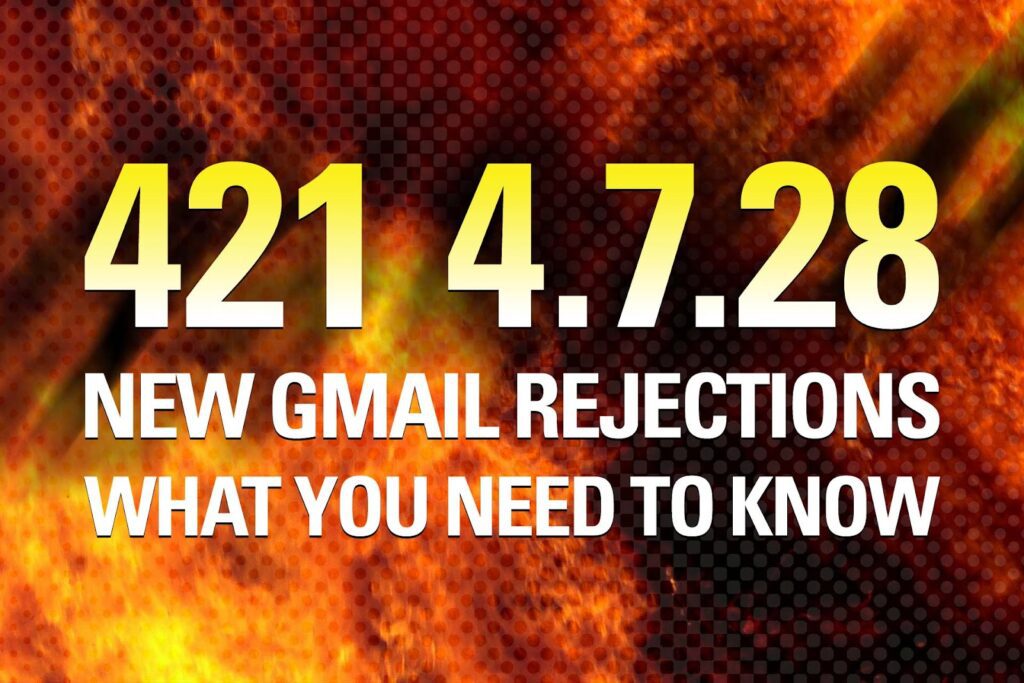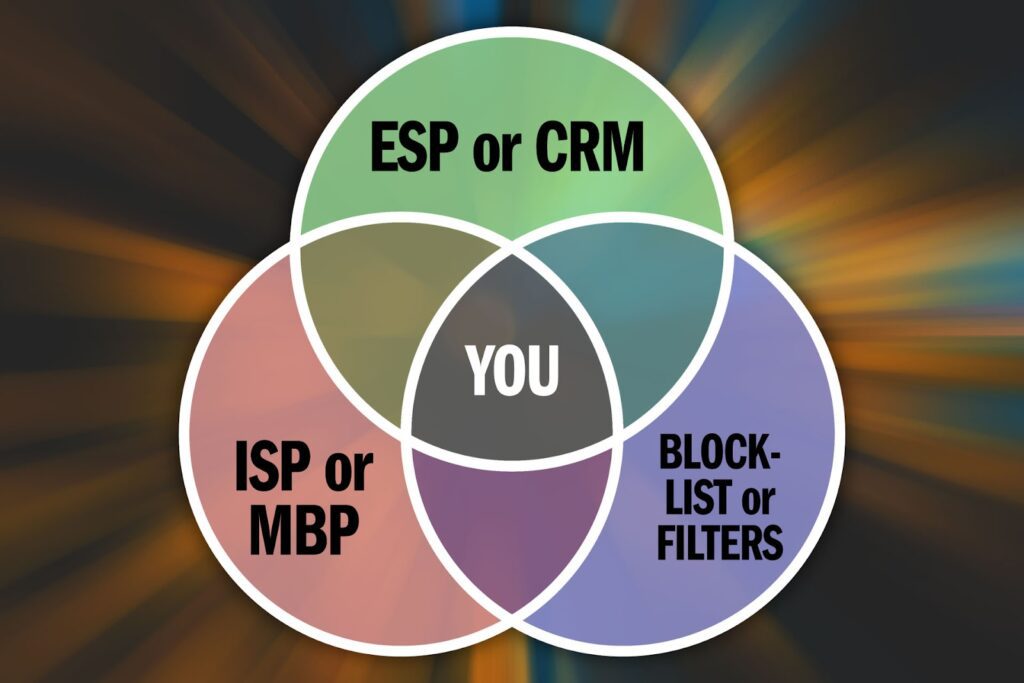blocking
Gmail has very recently unveiled a series of new deferral/rejection messages. You’ll want to familiarize yourself with the following Gmail rejection messages: 421 4.7.28 Our system has detected an unusual rate of unsolicited mail originating from your IP address. To protect our users from spam, mail sent from your IP address has been temporarily rate limited. Please visit https://support.google.com/mail/?p=UnsolicitedRateLimitError to review our Bulk Email Senders Guidelines. – gsmtp 421 4.7.28 Gmail has detected an unusual rate of unsolicited mail containing one of your URL domains. To protect our users from spam, mail with the URL has been temporarily rate limited. Please visit https://support.google.com/mail/?p=UnsolicitedRateLimitError to review our Bulk Email Senders Guidelines. – gsmtp 421 4.7.28 Gmail has detected an unusual rate of unsolicited mail originating from your SPF domain. To protect our users from spam, mail sent from your domain has been temporarily rate limited. Please visit https://support.google.com/mail/?p=UnsolicitedRateLimitError to review our
What do you do when you’re a newsletter publisher or marketing manager sending emails to your list and you run into deliverability trouble through no fault of your own? How do you even know? It’s a tricky and sticky situation and I’ve seen it happen more than once lately, and across more than one email service provider (ESP). The assumption, most of the time, is that if a mailbox provider — say, Gmail, decides to put your mail in the spam folder, that it’s a reflection of the quality of your mail — not a reflection of the provider or any issue the provider might be having. Ninety-seven percent of the time, it’s all about the (sending) client, not the sending platform. But sometimes it is actually a problem related to the sending platform. And that’s not an easy thing to measure. But it’s a good thing to ask your
Michael Crider (staff writer for PCWorld) is one of the many folks reporting on Google’s new real-time anti-phishing protection in the Chrome web browser. This means checking every domain you’re trying to visit against some sort of domain or URL blocking list. Aside from the privacy concerns (which I’ll leave to Michael to cover), I’m wondering about how likely this live monitoring and check process will be to subject to false positives. Is this just a quicker check against a now more-quickly updated Google Safe Browsing blocklist? If you find your email or website domain on your list in error, do you still go to this same “report error” page as before? How swiftly will they review and reset accidental listings? When something like this is scaled up and sped up, accuracy and/or manual review doesn’t always seem to scale up with it. So, color me full of concerns. Read
One of the most common refrains I hear from folks with delivery problems is that the filters must have changed because their mail suddenly started to go to the bulk folder. A few years ago, I posted about how even when there is no change in the sender’s behavior, reputation can slowly erode until mail suddenly goes to the Gmail bulk folder. Much of that still applies – although the comments on pixel loads (what other folks call ‘open rates’) are a bit outdated due to changes in Gmail behavior. While it is often true that reputation drives sudden delivery problems there are other reasons, too. Filters are always adjusting and changing to meet new challenges and threats. We’re seeing these changes rolling out at some of the consumer mailbox providers. Steve recently wrote about changes that Yahoo! was making related to domain existence. He also posted about Microsoft getting
These last few years have been something, huh? Something had to give and, in my case, that something was blogging. There were a number of reasons I stopped writing here, many of them personal, some of them more global. I will admit, I was (and still am a little) burned out as it seemed I was saying and writing the same things I’d been saying and writing for more than a decade. Taking time off has helped a little bit, as much to focus on what I really want to talk about. It helps, too, there are a lot more deliverability resources out there than when I started. I don’t have to say it all, there are other voices (and perspectives!) that are adding to the collective understanding of delivery. That’s taken some of my (admittedly internal) pressure off from having to write about specific things to explain, educate and
Microsoft recently posted that their Exchange Online servers (which I think also includes Microsoft 365/Office 365, basically any business email cloud-hosted by Microsoft) will soon block mail from old, unpatched Microsoft Exchange servers.Unlike the recent DMARC changes for Microsoft OLC, this likely has no impact to email marketing senders. Few email marketers are using years-old versions of self-hosted Microsoft Exchange for sending email messages.This does likely have a positive impact on the email ecosystem as a whole, though. Setting aside the snark of Microsoft (new, cloud) blocking Microsoft (old, on premise) servers, rejecting mail from servers that are (or could be) engaging in potentially bad acts is a good way to protect users from malware, phishing and spam, and hopefully will also nudge admins of those outdated servers to either upgrade them or shut them down, which will eliminate them as spam and phish vectors, making all of our inboxes











